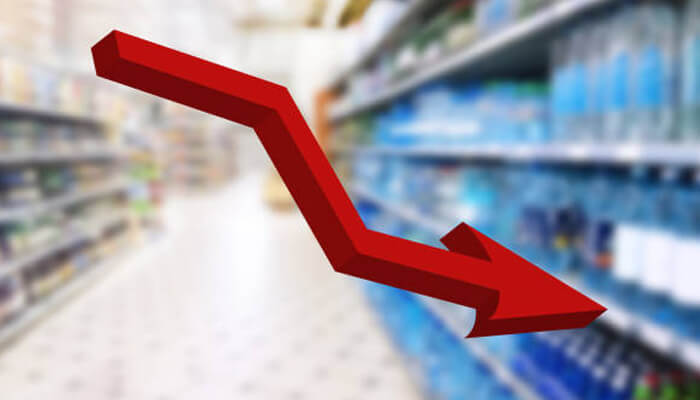A welcome break from the rapid price increases that have plagued them for over two years would be provided by the discounts offered by certain stores. Declining prices might seem advantageous, but deflation can be harmful.
However, investors, economists, and CEOs aren’t quite so enthusiastic about it.
In an article that was published on Wednesday in The Wall Street Journal, tech investor and ARK Investment Management founder Cathie Wood stated that she is more concerned about deflation—a decline in prices—than inflation. She made reference to deflation and said, “We’re seeing more and more signs of it.”
Ted Decker, the CEO of Home Depot, informed investors during the company’s earnings call earlier this week that the company’s third-quarter earnings were “negatively impacted” by declining prices for commodities like copper and lumber.
Billy Bastek, executive vice president of merchandising at Home Depot, added during the call that, as an illustration, the average price of framing lumber was about $420 per thousand board feet, down from about $545 in the third quarter of 2022. This represents a decrease of over 20%.
If prices are lower, why aren’t people purchasing more goods?
One of the first things taught to students in Economics 101 is that demand for a good decreases as the price increases. People also want more of a good when its price is lower.
Deflation, however, has the drawback that people lose motivation to buy now when they start to anticipate future price reductions. For example, why would you buy a new oven today if you thought the price would drop significantly in a month unless it was absolutely necessary?
When enough people hold that opinion, spending is drastically reduced. If it means businesses can’t afford to hire as many people, that could trigger a recession.
There isn’t much deflation in the US.
In the United States, where inflation is a problem like in many other countries, deflation is not a general issue.
In contrast, October prices in China were 0.2% lower for all goods and services than they were for the same month the previous year.
The most recent Consumer Price Index shows that US consumer prices are 3.2% higher than they were a year ago. Though the rate of increase has slowed considerably, Americans are still paying more for goods and services than they did a year ago.
Nevertheless, a lot of products in the US are far less expensive now than they were a year ago.
Doug McMillon, the CEO of Walmart, stated on Thursday that shoppers may soon experience more consistent price reductions at grocery stores. He cautioned that Walmart stores in the US may encounter “a deflationary environment.”
In addition to eggs, cheaper products include gasoline, airfares, appliances, and smartphones.
This is what Morningstar’s chief US economist, Preston Caldwell, called “selective deflation.” “It’s helping to push overall inflation back to the Fed’s 2% target with minimal pain in terms of unemployment and lost output,” he stated as of right now.
To put it another way, it’s enabling a soft landing, he told media outlets.



